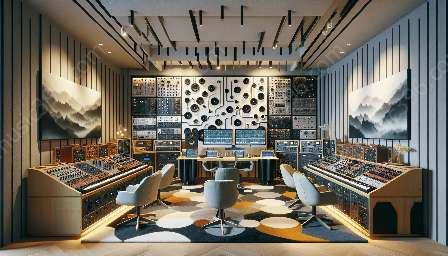Music analysis delves into the fundamental components of timbre, the complex interplay of texture and color in musical sound. Understanding these elements enriches the appreciation of music and provides insights for musicians, scholars, and enthusiasts alike.
The Nature of Timbre in Music Analysis
Timbre, often described as the 'tone color' of a sound, is an essential element in music analysis. It encompasses the unique qualities that distinguish one instrument or voice from another, contributing to the rich tapestry of musical expression.
Components of Timbre
Timbre analysis includes various components, such as:
- Harmonic Spectrum: The arrangement and intensity of overtones and harmonics, which shape the tonal characteristics of a sound.
- Attack and Decay: The initial onset and subsequent release of a sound, influencing its perceived sharpness and sustain.
- Envelope: The overall shape of a sound wave, encompassing its attack, sustain, decay, and release phases.
- Texture and Resonance: The intricate interplay of sound layers and resonant frequencies that give each instrument and voice its distinct sonic footprint.
Analyzing Timbre in Context
Music analysis considers timbre within the broader context of composition, performance, and perception. It examines how timbral nuances contribute to the emotional and aesthetic impact of a musical piece.
Texture and Mood
The timbral texture of a composition influences its overall mood and atmosphere. Rich, resonant timbres may evoke a sense of warmth and depth, while bright, clear timbres can convey a feeling of clarity and brilliance.
Instrumentation and Orchestration
Understanding timbral components is vital in orchestration, as it enables composers to harness the unique qualities of different instruments and voices to achieve desired sonic effects and contrasts.
Perceptual Analysis
Timbre analysis also delves into the perception of sound, exploring how listeners interpret and respond to the subtle nuances of timbral variation.
Application of Timbre Analysis
Timbre analysis extends to various areas, including:
Music Production
Producers and audio engineers employ timbre analysis in shaping the sonic landscape of recordings, manipulating timbral elements to achieve specific tonal textures and sonic qualities.
Performance Interpretation
Performers utilize timbral understanding to convey expressive nuances, infusing their renditions with rich and varied tonal colors to captivate audiences.
Musicological Research
Musicologists delve into timbre analysis as a means to study historical and cultural variations in musical timbres, shedding light on the evolution of sonic palettes across different eras and traditions.
The Dynamics of Timbral Interaction
Timbre analysis highlights the dynamic interplay between different components, including:
Timbre Fusion
When multiple instruments or voices combine, their individual timbres merge to create a unified sonic blend, enriching the overall timbral tapestry of the performance.
Contrasting Timbres
Composers and arrangers often employ contrasting timbres to create dramatic effects and evoke emotional responses, leveraging the diversity of tonal colors across different instruments and vocal timbres.
Exploration and Interpretation
Exploring the fundamental components of timbre in music analysis fosters a deeper interpretative understanding of musical works, opening doors to a rich tapestry of sonic experiences and expressive possibilities.

































